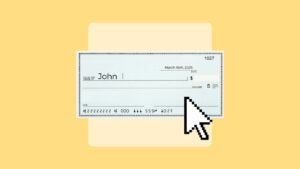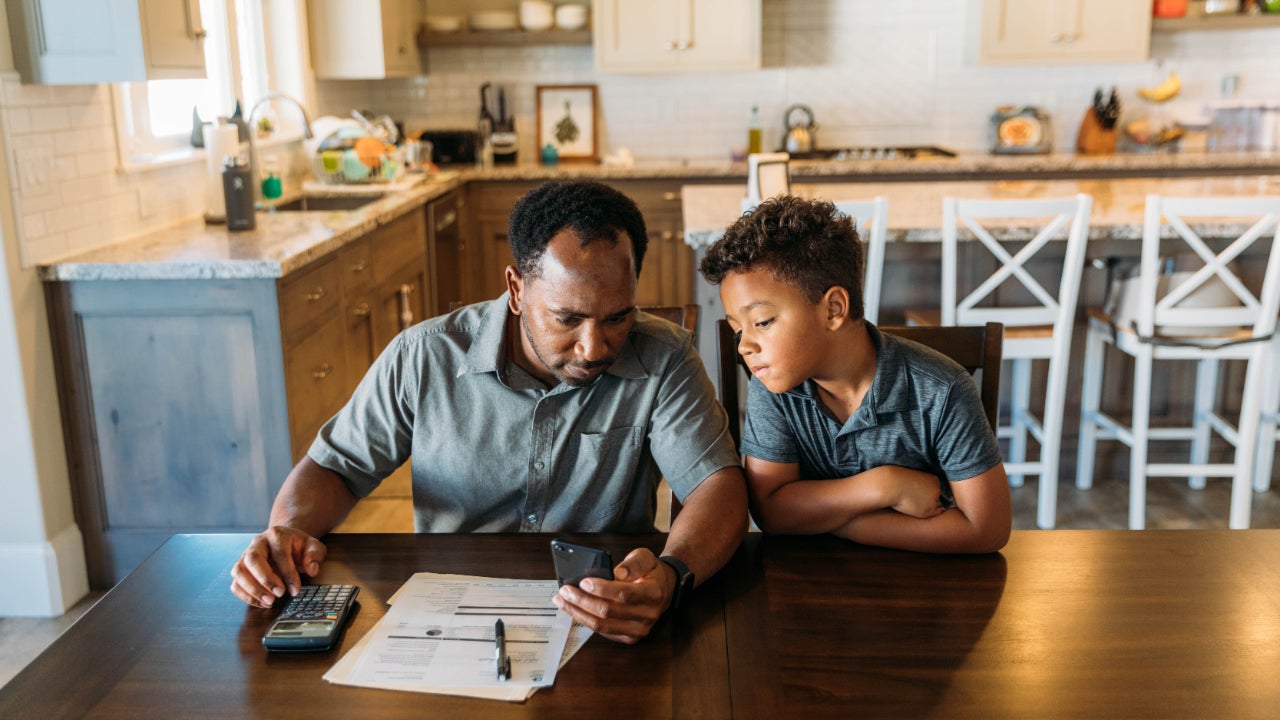Checkless checking account: What it is and how it works

For some, writing a check might happen once in a blue moon, or never at all. There are checking accounts designed to exclude checks altogether, and you might be considering one if you find that checks aren’t important to your personal finances.
Alternatively, a checkless checking account might be a suitable option for someone who’s a minor or has previously been denied a standard checking account.
Here’s everything you need to know about this unique type of checking account.
What is checkless checking?
As its namesake suggests, a checkless checking account is a transaction account that you can’t write checks against. Checkless checking accounts can reduce the risk of overspending, since your payment options are limited, and in most cases overdraft coverage isn’t available.
Someone who’s been rejected for a traditional checking account (due to something like not paying back overdraft fees in the past) may find it easier to be approved for a checkless checking account. The bank may allow you to build up a good banking relationship with one of these somewhat more limited accounts.
Many checkless checking accounts are also suitable for younger people who are developing their banking experience. The account may waive fees for younger people and allow minors to open it jointly with an adult.
Although you can’t write checks against a checkless checking account, you can still typically deposit checks, whether at a branch or through mobile check deposit.
Top checkless checking accounts
| Institution/Account name | Monthly fee | Minimum opening deposit | Overdraft coverage |
|---|---|---|---|
| Bank of America/SafeBalance Banking | $4.96 (waived for students, those under 18 years old and those enrolled in Preferred Rewards) | $25 | Not available |
| Citibank/Access Account | $10 (waived when you make one direct deposit or bill payment each month, or if you maintain an average balance of at least $1,500) | None | Available with a linked Citibank money market or savings account |
| KeyBank/Hassle-Free Account | None | None | Not available |
| US Bank/Safe Debit | $4.95 | $25 | Not available |
| Wells Fargo/Clear Access Banking | $5 (waived for account holders aged 13 to 24) | $25 | Not available |
Pros and cons of checkless checking accounts
Pros
- Checkless checking accounts often have low or no minimum opening deposit requirement.
- They can help reduce overspending and improve banking history.
- You can still deposit checks, whether it’s by bringing the check to a branch or completing a mobile check deposit.
- They’re often available to minors.
Cons
- The monthly fee may be harder to waive than it would be for other types of checking accounts.
- Most checkless checking accounts do not offer overdraft protection, so purchases you can’t afford will be declined.
- If you end up needing to write a check, you’ll have to do so either through a separate bank account or by using a cashier’s check or money order.
Is a checkless checking account right for you?
There are a few scenarios in which a checkless checking account might be ideal:
- You’ve been rejected for a checking account in the past, due to a history of writing bad checks or failing to pay overdrafts.
- You’re a minor or have a child who’s a minor and would like to build up a good banking relationship.
- You already have a bank account for writing checks and want to open another account to use primarily for debit card spending or bill payments.
If you’re able to open a standard checking account and don’t yet have an account you can write checks against, a checkless checking account might not be the first type of account you should turn to. You might find yourself needing to write a check, even if it’s rare.
In 2021, 46 percent of U.S. consumers reported writing a check at least once in the last 30 days, according to the Survey and Diary of Consumer Payment Choice. It’s useful to have the option to write checks in the event that a check is needed.
Those who have previously been rejected for a checking account have other options, as well. There are some second-chance checking accounts that come with check-writing privileges. However, second-chance accounts may come with higher monthly fees that can’t be waived, so it’s important to compare fees before settling on an account.
Minors, too, can find accounts that come with checks. Plenty of banks offer teen checking accounts, which can be opened jointly between parents and their children. Capital One, for example, offers a MONEY teen checking account that comes with no monthly fee or minimum balance requirement.
Bottom line
Checkless checking accounts might be a good option for minors and those who’ve been rejected for a traditional checking account. They might also be appropriate for someone looking to open an additional transaction account to be used primarily for debit card transactions or other electronic payment types.
Otherwise, it’s important to have an account that does allow you to write checks, since you never know when you might need to send a check to an older relative or pay a landlord who only accepts checks. Browse standard checking accounts or consider a money market account, which allows for a limited number of checking transactions each month.






